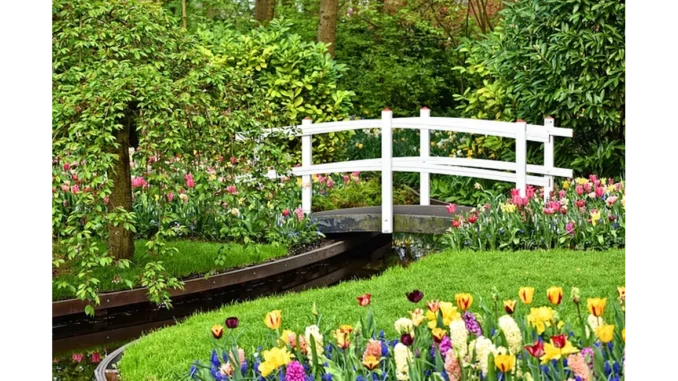
Crafting a Thriving Garden: Expert Tips for Selecting Perennials, Shrubs, and Trees
Creating a garden that flourishes with beauty and vitality goes beyond merely planting a few flowers. It involves meticulous planning and a discerning eye to ensure that every plant not only survives but thrives in your unique environment. This guide delves into essential steps and considerations for selecting perennials, shrubs, and trees that will transform your garden into a lush, vibrant haven.
Understanding Your Garden’s Conditions
Assessing Sunlight:
To begin, scrutinise the sunlight patterns in your garden. Different plants have varying sunlight requirements, from full sun to partial or full shade. Observing these patterns will allow you to strategically place plants where they can bask in the optimal amount of light.
Evaluating Soil Type:
Soil type is a critical factor in plant health. Determine whether your soil is sandy, loamy, or clayey, as each has distinct drainage and nutrient properties. Conducting a soil test to ascertain its pH level and nutrient content will further guide your plant choices, ensuring they are well-suited to your soil conditions.
Considering Climate:
Your region’s climate plays a pivotal role in plant selection. Whether you reside in a hot, arid area, a humid tropical zone, or a cold temperate region, choosing plants adapted to your local climate will enhance their chances of flourishing and enduring temperature extremes.
Water Availability:
Water is a vital resource, and understanding its availability in your garden is essential. Some plants thrive with regular watering, while others are more drought-resistant. Opt for plants that align with your water availability, especially if conservation is a priority.
Choosing the Right Perennials
Bloom Time:
Perennials, living for more than two years, are a staple for long-term garden planning. Select a variety of perennials that bloom at different times to ensure continuous colour and interest throughout the year. This not only creates a captivating landscape but also attracts pollinators like bees and butterflies.
Height and Spread:
Consider the mature height and spread of your chosen perennials. This helps in designing a harmonious layout where taller plants don’t overshadow shorter ones. Grouping plants with similar growth habits together can create a balanced and visually appealing garden.
Maintenance:
If a low-maintenance garden is your goal, choose resilient perennials that require minimal care. Seek out disease-resistant varieties that don’t need frequent pruning or deadheading, making your gardening experience more enjoyable and less laborious.
Native Plants:
Incorporating native perennials can significantly enhance your garden’s sustainability. These plants are naturally adapted to local soil and climate conditions, requiring less intervention. Moreover, they provide essential habitats and food sources for local wildlife.
Selecting the Perfect Shrubs
Purpose:
Shrubs add structure and year-round interest to your garden. Define the purpose of your shrubs—whether for privacy, windbreaks, or as focal points. For instance, evergreen shrubs are ideal for privacy screens, while flowering shrubs add vibrant hues and attract pollinators.
Size and Growth Rate:
Consider the mature size and growth rate of shrubs to ensure they fit within your garden space without becoming overwhelming. While fast-growing shrubs provide quick results, they may require more frequent pruning to maintain their shape.
Foliage and Flowers:
Pay attention to the aesthetic attributes of shrubs, such as foliage colour, texture, and shape. Choose shrubs with flowers that bloom at various times to maintain a continuous display of colour, enhancing the visual appeal of your garden.
Hardiness:
Select shrubs suited to your climate’s hardiness zone. This increases their survival rate during winter and reduces the need for extra protection during harsh weather.
Choosing the Right Trees
Purpose:
Trees bring shade, beauty, and ecological benefits to your garden. Determine their purpose—whether for shade, ornamental value, or fruit production. For example, deciduous trees provide summer shade and winter sunlight, while fruit trees offer a delightful harvest.
Size and Growth Rate:
Consider the mature size and growth rate of trees, ensuring they have ample space to grow without interfering with structures or other plants. While fast-growing trees deliver swift results, they may have weaker wood and shorter lifespans compared to slower-growing species.
Maintenance:
Evaluate the maintenance requirements of trees, including pruning, leaf cleanup, and pest management. Opt for resilient, low-maintenance trees if you prefer a hassle-free garden.
Soil and Water Requirements:
Different trees have specific soil and water needs. Ensure your selections are compatible with your garden’s soil type and moisture levels. Some trees are drought-tolerant, while others thrive in consistently moist soil.
By thoughtfully considering your garden’s sunlight, soil, climate, and water availability, you can make informed plant choices that result in a thriving and visually stunning landscape. Embrace a mix of perennials, shrubs, and trees that bloom throughout the year, consider their mature size and growth habits, and opt for low-maintenance options if desired. With careful planning and selection, your garden will become a perennial source of joy and beauty.
Happy gardening!


Be the first to comment